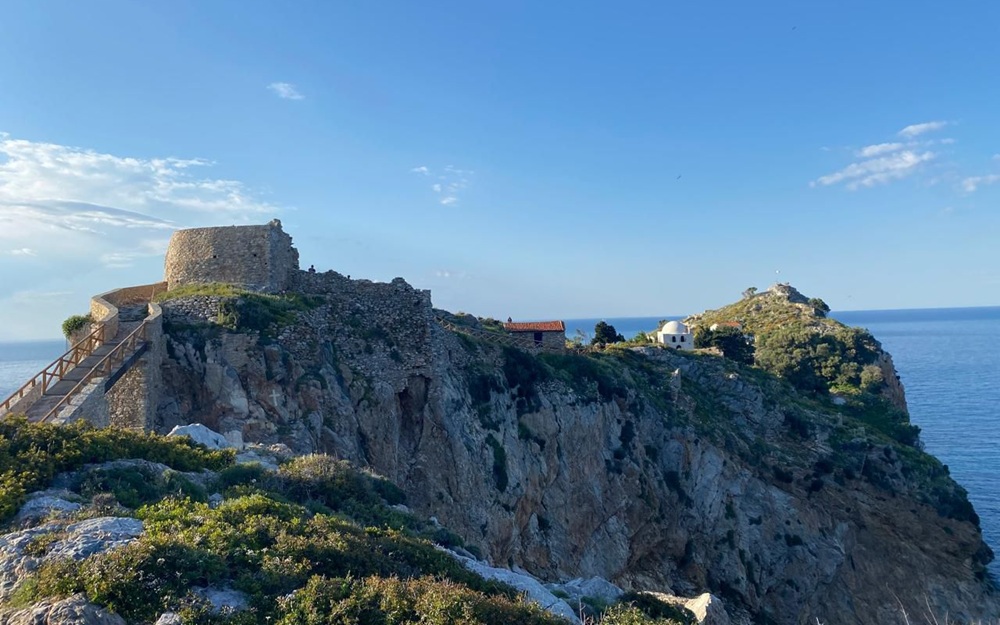
In the presence of the Minister of Culture, Lina Mendoni, a very difficult and demanding project of highlighting and connecting the Castle with the island was inaugurated and awarded, after its completion, to the residents of Skiathos and its numerous visitors. It included the construction of the bridge, the restoration of its gate, the reconstruction of the path for smooth access.
The Castle, a monument of the 14th century, a landmark of the island, the centre of social life and a place of worship, a symbol of the island state itself, as described in many of Alexandros Papadiamantis’ short stories, was the main demand of the whole island for many years.
In the framework of the project, works were carried out to shape the access of the path to the gate of the main castle, restoration of the entrance gate with the installation of a new door and the reconstruction of the arched lintel, completions and recoveries of the masonry, restoration and fixing of the south wall and construction of a new bridge in place of the old one, after the repair of the stone pedestals. Difficult work was carried out to restore the stability of the rocky slopes, both in the area of the pedestals and the gate, and on the south wall, including the removal of crumbling rock fragments, cleaning of discontinuities, high tensile strength anchorages, etc.
The cobbled path from the entrance of the castle to the gate was renovated, with the opening, in places up to two metres wide and fixing, with thin mortar, of the stone structures that are located on it, as well as local completion of the cobblestones in various parts of the existing sections of the paths, after smoothing, in places, along the entire length of the visit route. In addition, the Ephorate of Antiquities of Magnesia implemented, within the castle, cleaning and restoration works of the cobbled paths, restoration of the churches of Christ, Panagia Prekla and Panagia Megalomata, Agios Nikolaos and the mosque, which will continue, primarily in order to protect them, but also to return them to worship as far as possible, so that the younger generations of the island can gain a more complete picture of the monument itself.
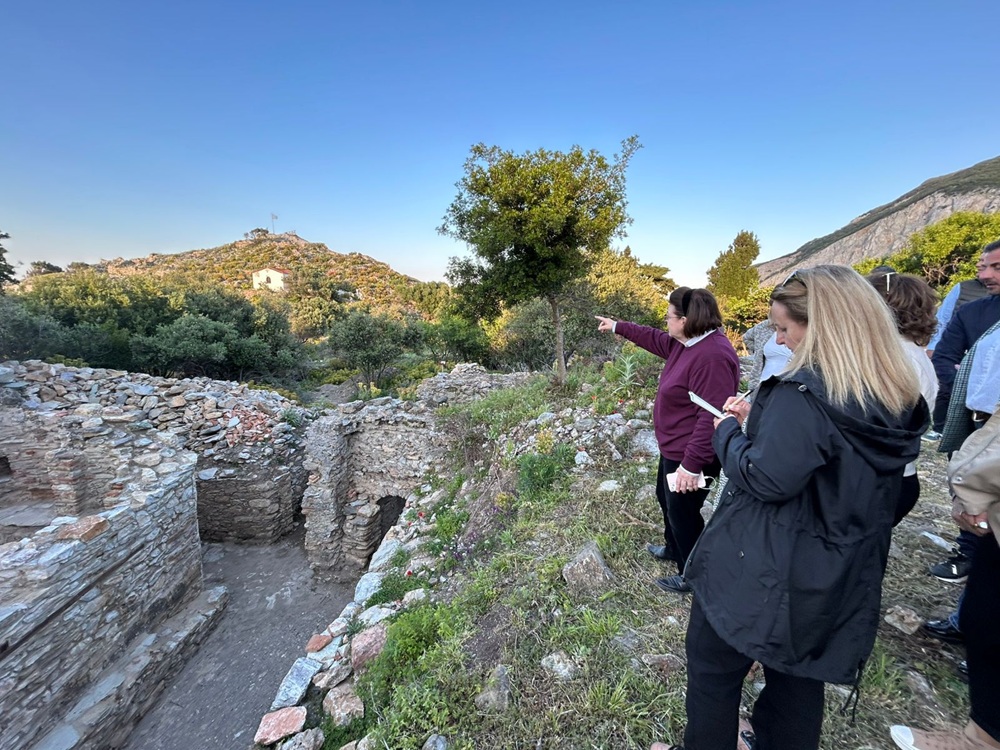
The castle was founded in the middle of the 14th century by the inhabitants of the ancient and Byzantine town of Skiathos, which was located on the site of today’s town, who were forced, due to pirate raids, to move to a steep and naturally fortified position at the northern end of the island. This is where the medieval town of Skiathos developed, which seems to have been the only town on the island in the 15th century. The castle of Skiathos in 1453 was under Venetian rule, in 1538 it was occupied by Hayredin Barbarossa, and in 1540 it passed to the Ottomans, under whose rule it remained until its liberation in 1829, when the present settlement was re-established. From the once medieval fortified settlement only the gate and the northern wall, ruins of houses, which according to Al. Papadiamantis, the only remains of the houses that remain are the remains of the villages, which, according to Alexandros Papadiamantis, numbered three hundred.
The works were also completed in the holy monasteries of Panagia Kehria and the Presentation of the Virgin Mary (Panagia Iconistria).
Lina Mendoni inspected the works at the Church of Panagia Kehria, an 18th century monument, which is being restored to the residents and visitors of Skiathos.
The Holy Monastery of Panagia Kehria is located northwest of Skiathos town in the green valley of Kechiras and is celebrated on August 23rd. The monastic complex includes a stone-built enclosure, on the north and south side of which the wings of the cells were built. Only the northern wing is preserved today, while the southern wing has collapsed and its ruins, together with traces of the enclosure, can be seen on the ground. The katholikon is built almost in contact with the vertical cliff that bounds the monastery from the east. The church belongs to the type of the convoluted cruciform inscribed with a dome and a cylindrical drum with fourteen windows and decorated with colourful glazed panels, from the famous workshops of Nicaea. According to a written inscription above the entrance, the church was renovated in 1738, while its fresco decoration was created in 1745, by the same team of painters who worked on Panagia Iconistria. The iconostasis dates back to the end of the 18th century.
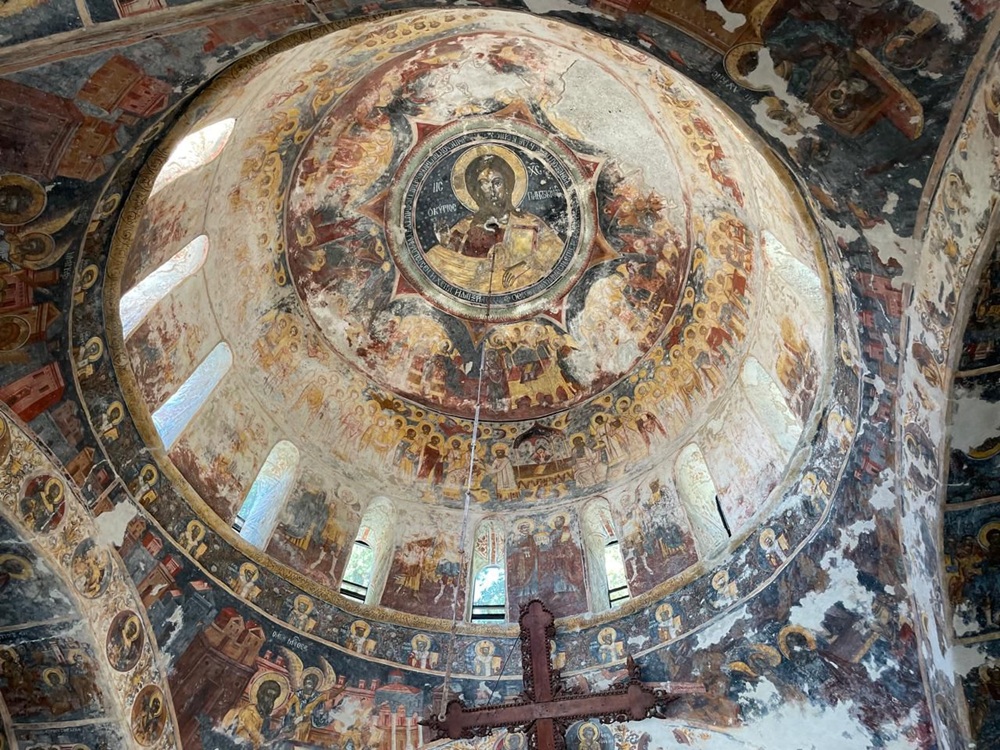
The monastery is located in a pine forest west of Skiathos, on the road to Aselinos. It owes its foundation to the discovery of the miraculous icon of the Virgin Mary, the patron saint of the island, in the middle of the 17th century. The icon is kept in the church of the Three Hierarchs in Skiathos and is carried to the monastery in a procession during the celebration of the Presentation of the Virgin Mary on 21 November. The interior of the church is decorated with frescoes of saintly figures with relief halos and scenes from the Theotokos and Christological cycle. The construction of the church, based on its architectural form, could be dated to the end of the 17th century. According to two inscribed plaques, the church was renovated in 1726. At that time the two-storey narthex was added, which was renovated in 1798. The frescoes were painted in 1741, with the exception of the painting on the dome, which is dated 1805.
The Minister of Culture was accompanied by the Mayor of Skiathos, Thodoris Tzoumas, and the Director General of Antiquities and Cultural Heritage, Olympia Vikatou, the Head of the Directorate of Byzantine and Post-Byzantine Monuments, Themistoklis Vlachoulis, the Head of the Department of Projects of the Directorate, Efthymia Chorafa, the Head of the Ephorate of Antiquities of Magnesia, Kristallia Mantzana and officials of the Ministry of Culture.

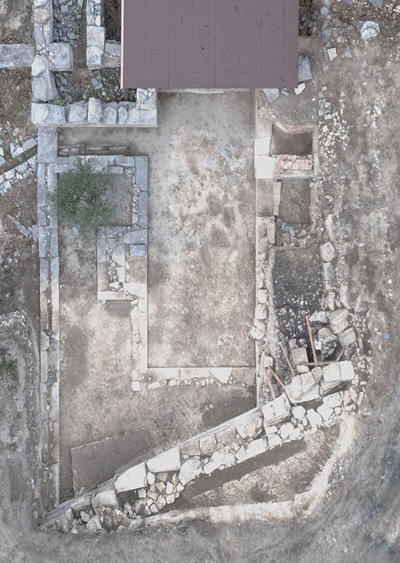
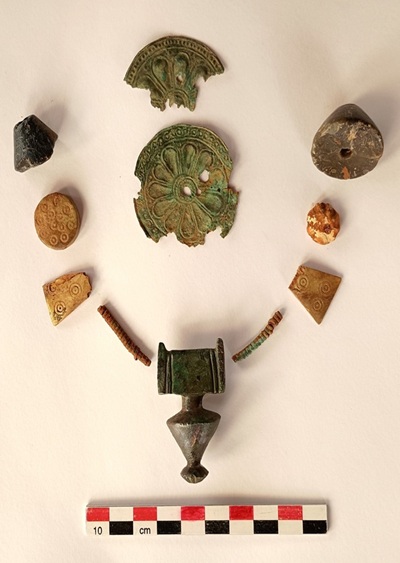
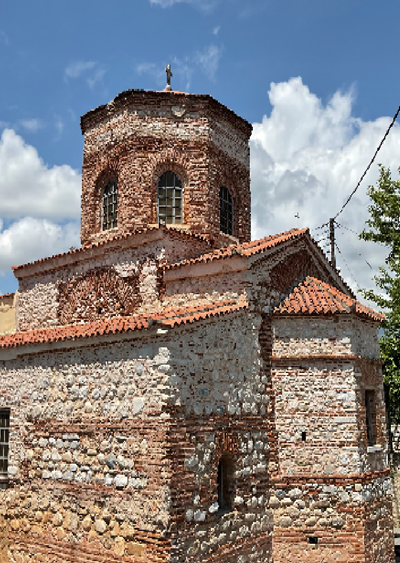



Leave A Comment